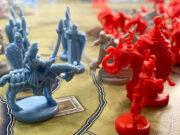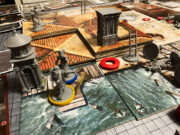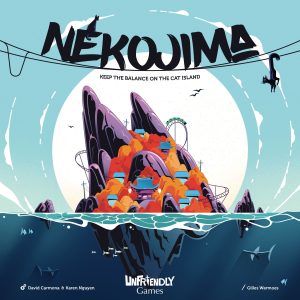 Nekojima is a 1-5 player dexterity game based on the cat islands of Japan from Hachette Board Games which may be played competitively, cooperatively, or solo. While the nekos (cats) are indeed in the game, the central element is carefully balancing electrical poles with brightly-colored string between them without letting the whole infrastructure come tumbling down. While Nekojima indeed looks incredibly colorful and cute, is the game itself something of a house of cards?
Nekojima is a 1-5 player dexterity game based on the cat islands of Japan from Hachette Board Games which may be played competitively, cooperatively, or solo. While the nekos (cats) are indeed in the game, the central element is carefully balancing electrical poles with brightly-colored string between them without letting the whole infrastructure come tumbling down. While Nekojima indeed looks incredibly colorful and cute, is the game itself something of a house of cards?
Gameplay Overview:
The “game” consists of rolling a pair of dice, which will dictate which of the game board’s four quadrants the player must place each electrical pole attached to either side of the string. This combo of two wooden poles connected by a piece of string is called a Denchuu. Then the player blindly pulls a cube out of a bag which will dictate the color of the string between the two poles. The strings vary in length based on their color, with pink/red being the shortest, white being medium, and blue being the longest.

When placing Denchuus, the string may not touch the game board or any other string, and may not be wrapped around the poles. Denchuu poles may be placed on top of existing poles and built atop them. If, while drawing cubes, a player happened to have pulled a black cube, this means a cat must be played. In cooperative games, the player who pulled the cat must hang it by its tail or paw on one of the Denchuu strings, while in a competitive game, the player who pulled the cube must choose another player and they must carefully place the cat without having the whole thing collapse.
There are some other minor variants included in the game (birds nests that limit the height of the Denchuu stacks to two-high, etc.), but that is basically the gist of it. In competitive mode, the player who made the Denchuus collapse is the loser, everyone else the winner; in cooperative mode, there’s a cube-tracker that gives players a measure of how well they’ve done.
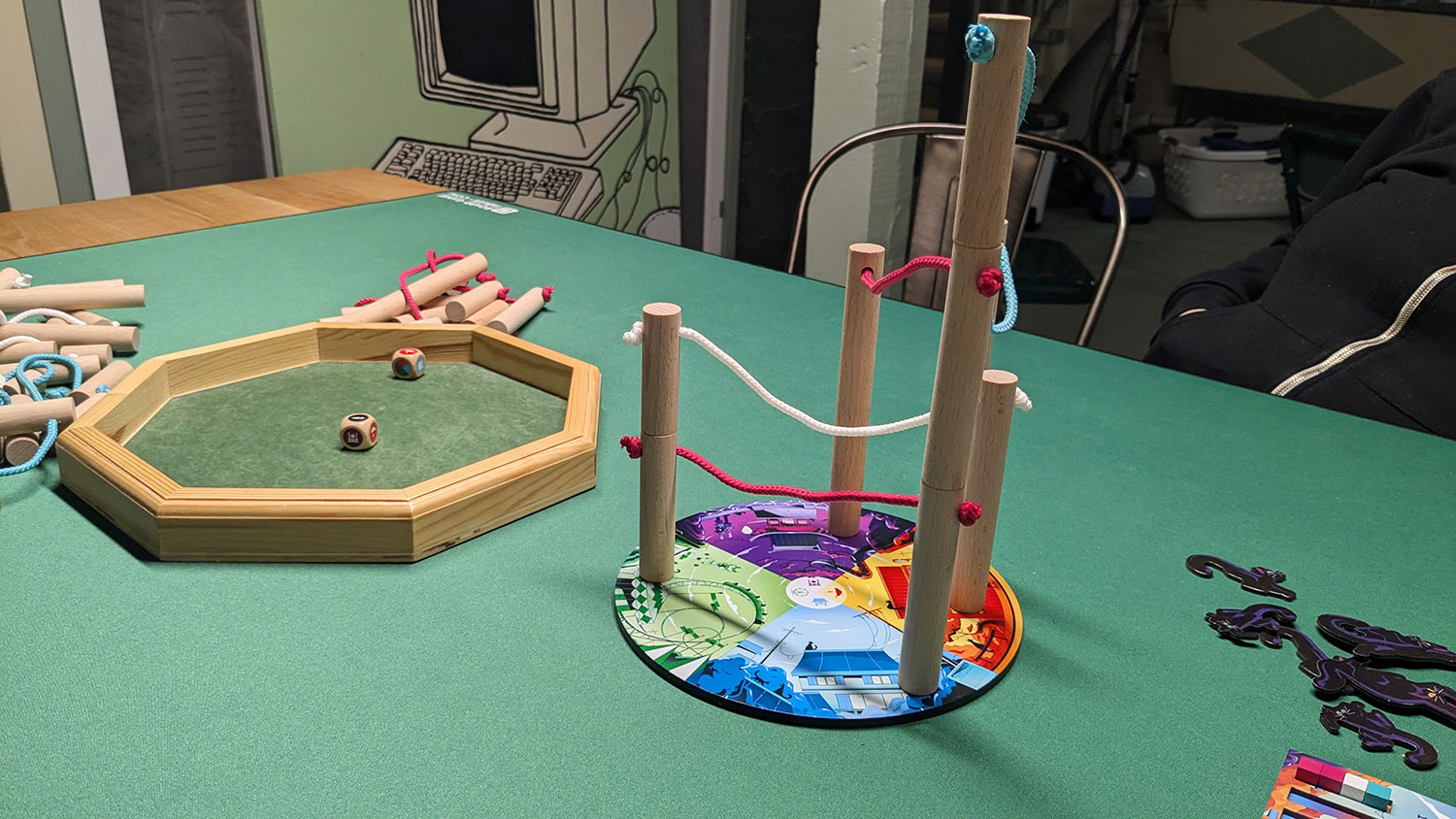
Game Experience:
Nekojima was one of those games that grabbed my attention at Gen Con. The table presence is impressive and colorful, the production quality appears to be excellent, and the theme is delightful.
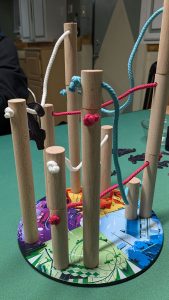
The problem is that there’s not really a game here. There’s not a ton of tension because the feeling when the system of Denchuus collapses, whether playing cooperatively or competitively, is more of an “aw man…” feeling than the riotous explosion you hope for from a dexterity game. The game always ends before it gets interesting.
Before you tell me that that’s because I suck at dexterity games, I’ll stop you. Dexterity games (outside of deeply competitive games like Crokinole) are not about proficiency, they are about effervescent fun. I did not have that playing this game. Over our 15 or so plays of the game, we never really got to the point where the pressure was on and we truly felt we had a construction that was worthy of those white-knuckle moments that you look for from a dexterity balancing game.
Which is a shame, because, again, it’s very pretty to look at. I would always prefer to play Tokyo Highway or Paku Paku, two other pretty-looking dexterity games that have way more drama than Nekojimo. Hell, I’d rather play Jenga.
Final Thoughts:
Nekojima just brought no drama that normally comes with dexterity games. Games ended before they really began, and rather than having that “oh sh*t” moment when the construction came crashing down, it felt more like the air was being sucked out of the room.
Final Score: 2 stars – A visually stunning but ultimately lackluster balancing dexterity game that quickly wore out its welcome.
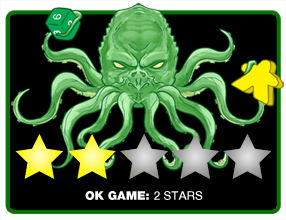 Hits:
Hits:
• Nice production quality
• Pretty to look at
Misses:
• Games lack drama
• Game ends before it gets interesting
• Variants don’t actually provide much variety




